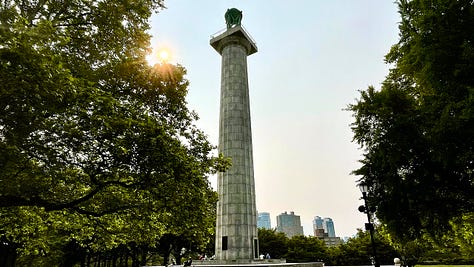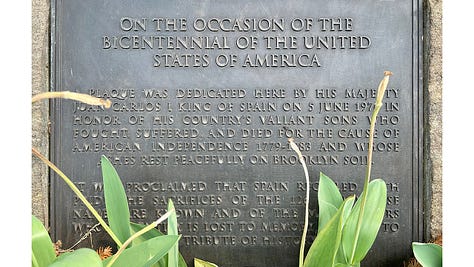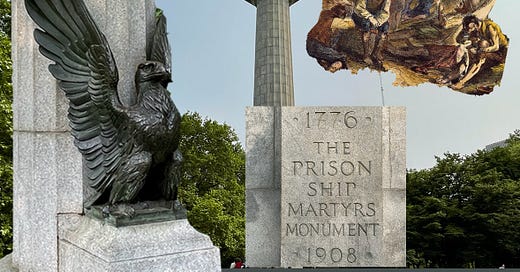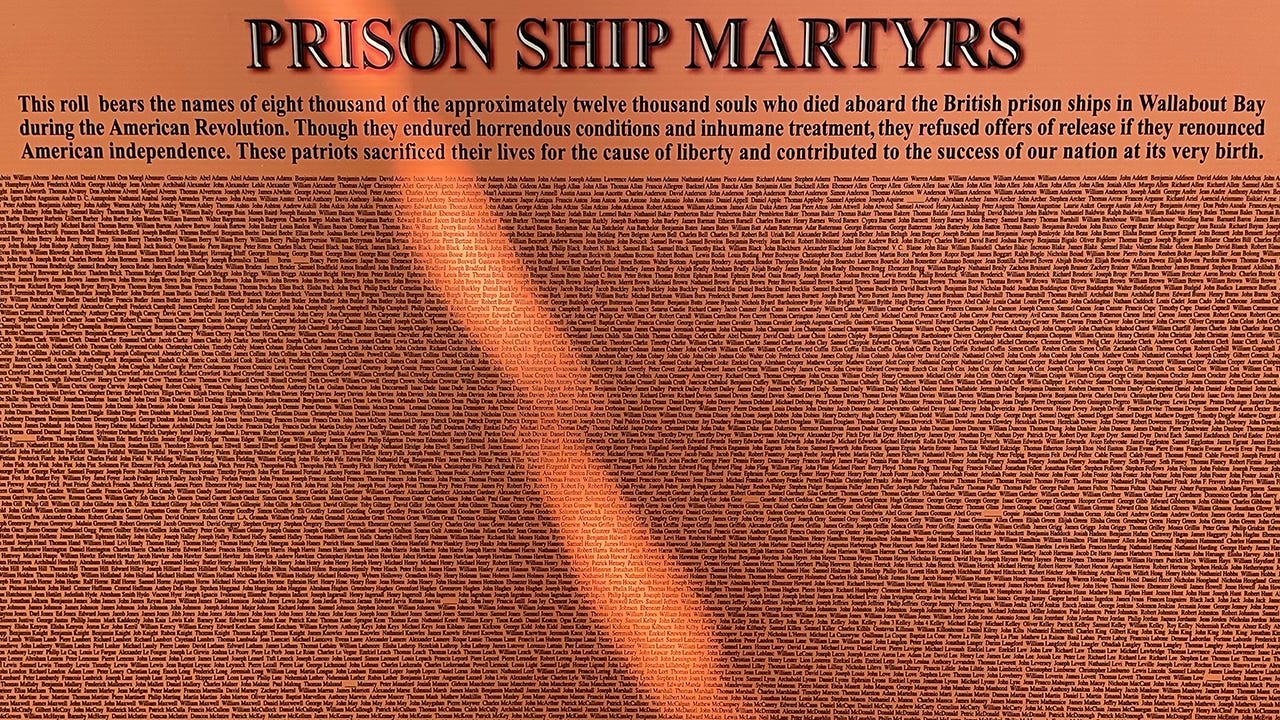Original tomb of unknowns testifies to horrifying cost of US independence
Prison Ship Martyrs Monument in Brooklyn dedicated to 11,500 forgotten patriots
The Tomb of the Unknown Soldier at Arlington National Cemetery in Virginia is the center of the nation’s Memorial Day ceremonies each year – and a hallowed testament to sacrifice 24/7/365.
It is the most well-known tomb of unknowns in the United States.
But it’s not the first.
That reverent honor belongs to the Prison Ships Martyrs Monument at Fort Greene Park in Brooklyn, New York.
A 150-foot-tall Doric column rises with great dignity over the footprint of Fort Greene, a defensive stronghold from the American Revolution.
Beneath it are the remains of just some of the thousands of patriots – soldiers, sailors and privateers – who died of abuse, neglect, starvation or disease aboard prison ships in the East River during the British occupation of New York City in the American Revolution
The identities of these war dead, like those in Arlington, are known but to God.
"Prisoners roasted in sizzling temperatures, drank brackish water supplied through the sides of the ship, starved, and quarreled with vermin, lice, impending madness, dehydration and contagious disease," the American Battlefield Trust reports of the hellish conditions aboard the ships.
Here are 10 facts you should know about what some New Yorkers call America’s “original Tomb of Unknown Soldiers.”
TEN — The Prison Ship Martyrs Monument sits upon the site of Fort Putnam, which was constructed during the American Revolution under the guidance of General Nathaniel Greene. It was renamed Fort Greene in his honor during the War of 1812. The prison ships floated a short distance to the north in Wallabout Bay.
NINE - An awe-inspiring force of 400 British ships led the occupation of New York, arriving outside New York Harbor in the late spring/early summer of 1776. Ninety vessels led the amphibious invasion of Brooklyn on August 22. The Brits overwhelmed George Washington’s army and by fall had forced the Americans clear across New Jersey.
EIGHT - The Limeys occupied New York City throughout the war and 16 of its vessels served as prison ships in the East River. The HMS Jersey, converted from a warship to a prison ship, became notorious as a floating death chamber for the rebels.

"I soon found that every spark of humanity had fled the breasts of the British officers who had charge of that floating receptacle of human misery,” Alexander Coffin Jr., a teenage American patriot and HMS Jersey prisoner, wrote of conditions on the ship. “Nothing but abuse and insult was to be expected."
SEVEN - More Americans died on prison ships during the American Revolution (estimated 11,500) than were killed in combat (about 6,800, according to the American Battlefield Trust). As many as six prisoners died per day upon each ship, according to some sources.
SIX - The bodies of the prison ship martyrs, emaciated from starvation and/or infected with horrific disease, were tossed overboard or buried on the shore in shallow graves. Grateful residents gathered the remains, mostly just bones, when they were exposed or washed up on shore in the years after the war. They were first buried in a tomb on what's now Hudson Avenue in 1808.
FIVE - Some of the most notable Americans of the 19th century rallied to properly honor the prison ship martyrs.
Famed poet and native New Yorker Walt Whitman, a newspaper editor in the 1840s, promoted efforts to turn Fort Greene into a public park. Calvert Vaux and Franklin Law Olmstead – best known as the landscape architects of Central Park — designed the new green space with a crypt for the remains of the martyrs. President William Howard Taft led the dedication of the Prison Ships Martyrs Monument in 1908.



FOUR - The monument itself was designed by the prestigious architectural firm of McKim, Mead and White and sculpted by celebrated artist Adolph Alexander Weinman.
"Twenty-two boxes, containing a mere fraction of the total volume of remains, were interred in the vault" in 1873, notes the NYC Parks Department. Funding, it ads, came from a mix of government and private sources.
THREE - Brooklyn Navy Yard opened on Wallabout Bay, where the prison ships were anchored, in 1801. It was an industrial behemoth by World War II and built many of America’s greatest warships. The USS Missouri, upon which Japan surrendered in Tokyo Bay to end World War II in 1945, was built at Brooklyn Navy Yard – along the waters where so many American patriots died gruesomely during the fight for independence.
TWO - The rebel prisoners included thousands of martyrs who joined the American Revolution from France, Netherlands, Spain and other countries. The crypt of unknowns likely includes the remains of these international warriors who joined the cause of American independence, the cause of humanity, and suffered gruesome death for their bravery.
ONE - The Prison Ship Martyrs Monument was most recently restored in 2008 to celebrate the centennial of its dedication by President Taft. It’s topped by a brass lantern illuminated at night with electric lights; originally an eternal flame.
Brooklynites enjoy Fort Greene Park as New Yorkers do any other in the city’s vast network of parks. They exercise, skateboard, nap, read and picnic beneath the towering column.
Some take time to read the reminders around the park of the unknown patriots buried beneath their feet who give them the luxury to relax in peace amid a sprawling prosperous city.
"The Prison Ship Martyrs Monument is a gruesome reminder of war," Greg Young, co-host and producer of "The Bowery Boys" podcast, a popular New York City podcast, told Thug Adams in a report for another outlet in 2023.
"Most of us could not imagine the suffering experienced by those who are interred here."










Good article Thug. Legit unknown history with zero political BS or shilling for Israel. Keep it up fuckface